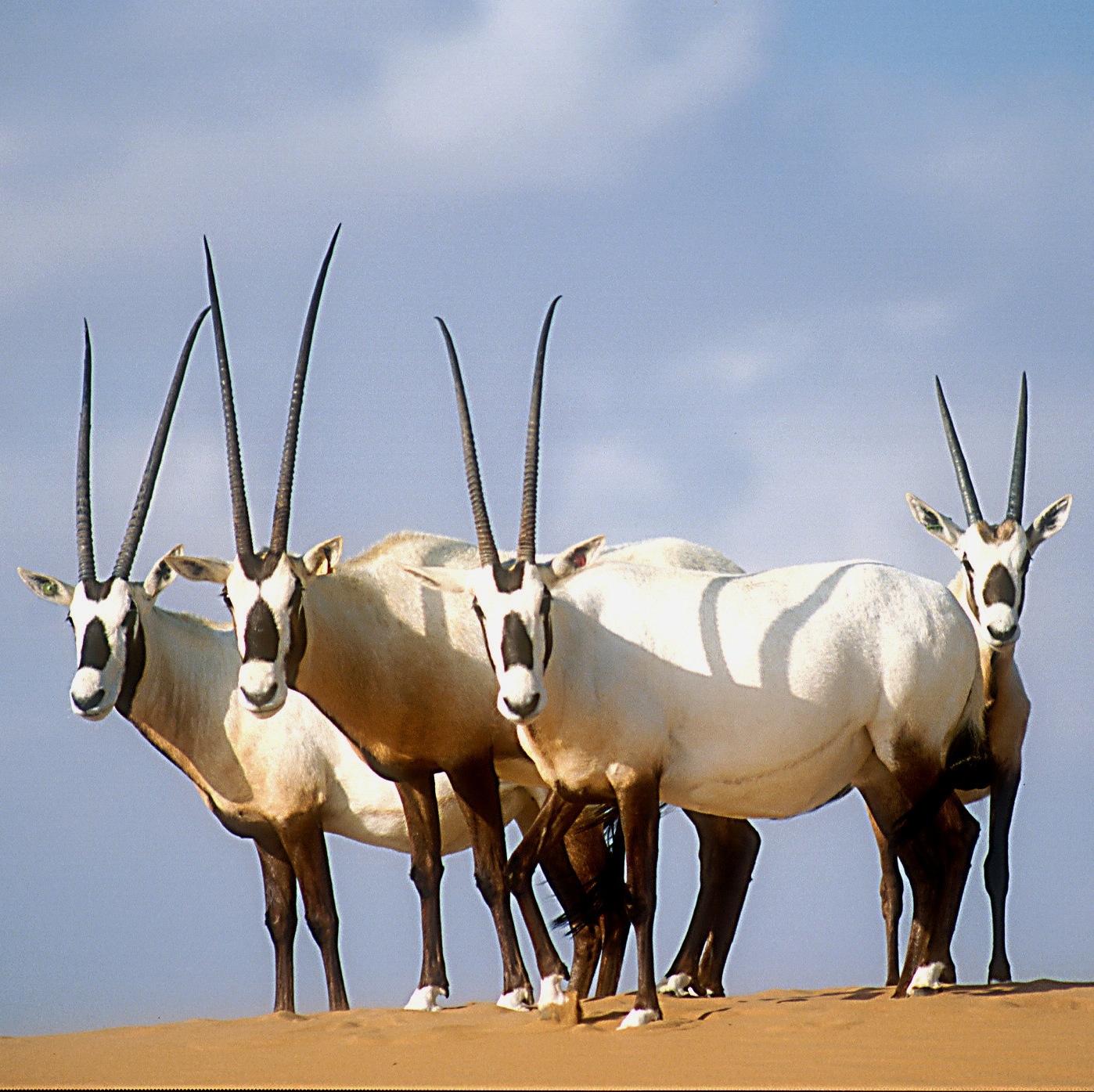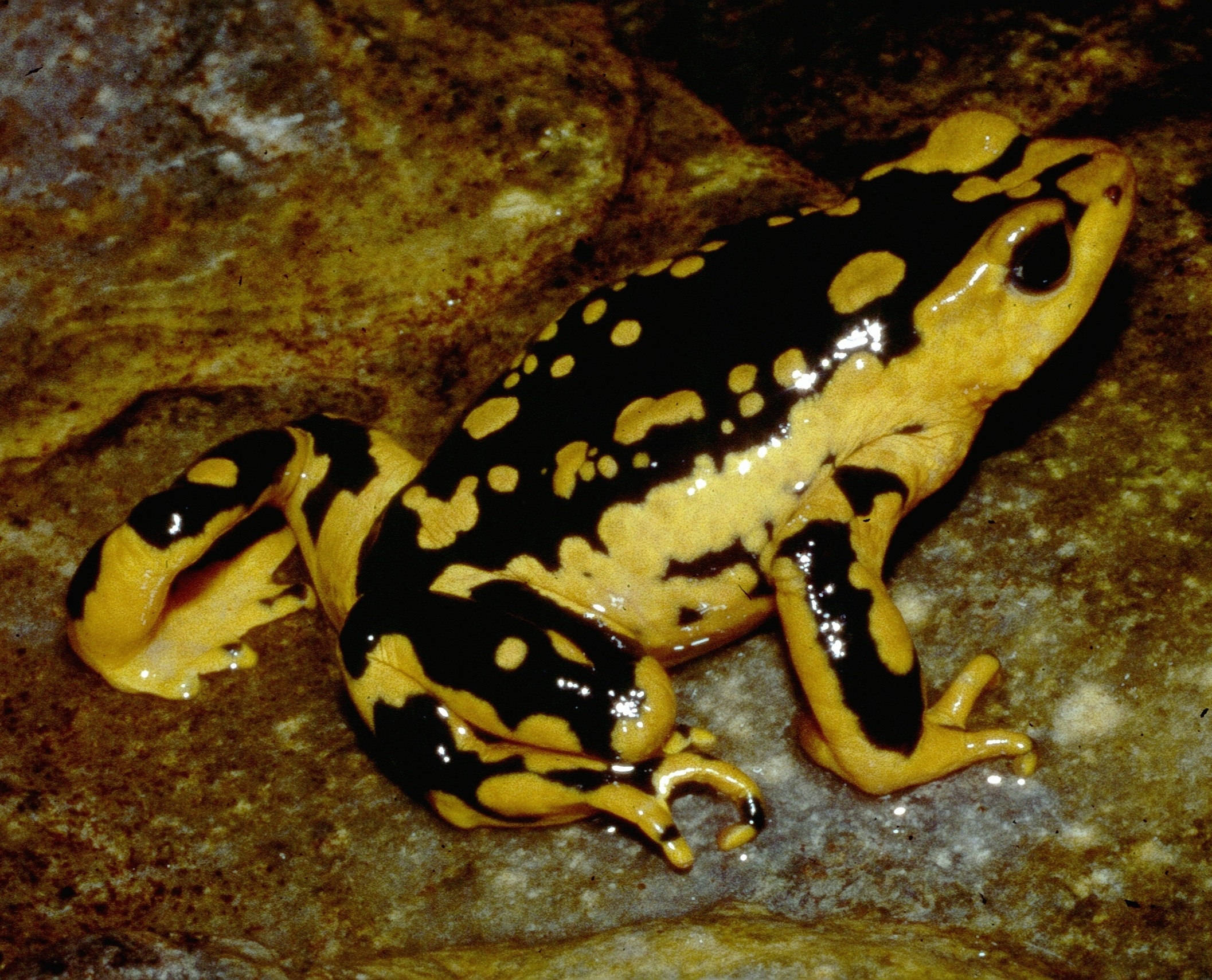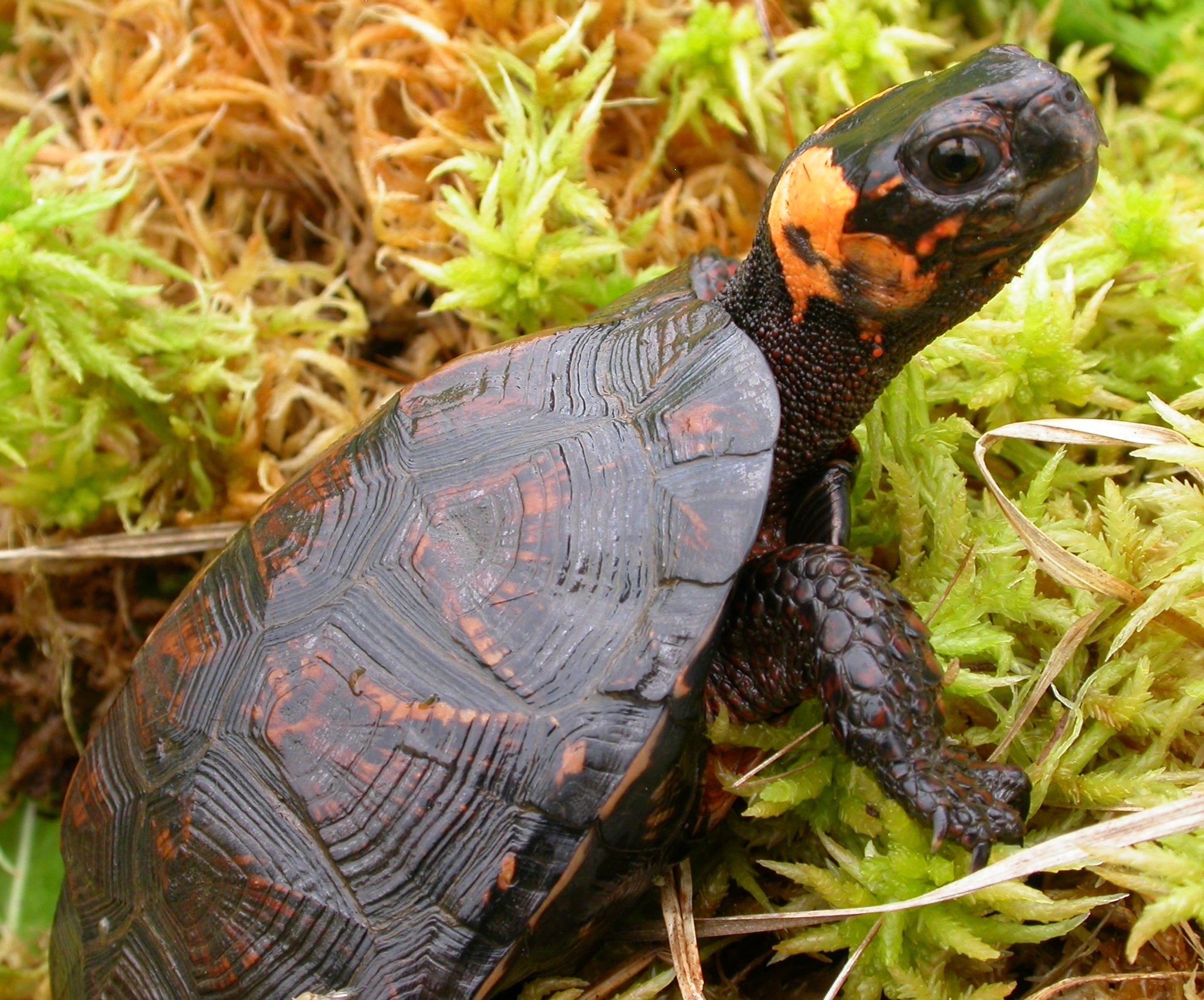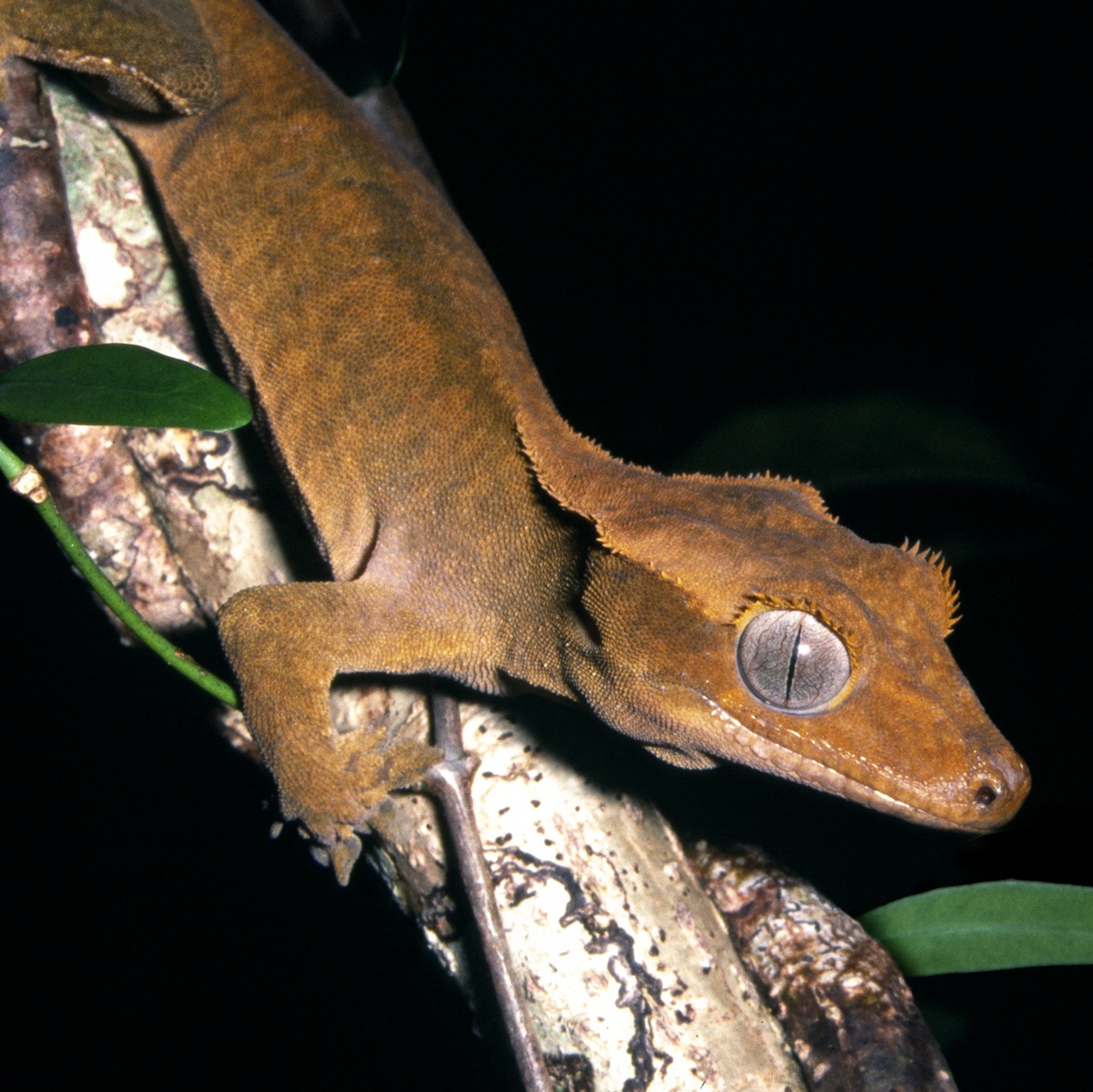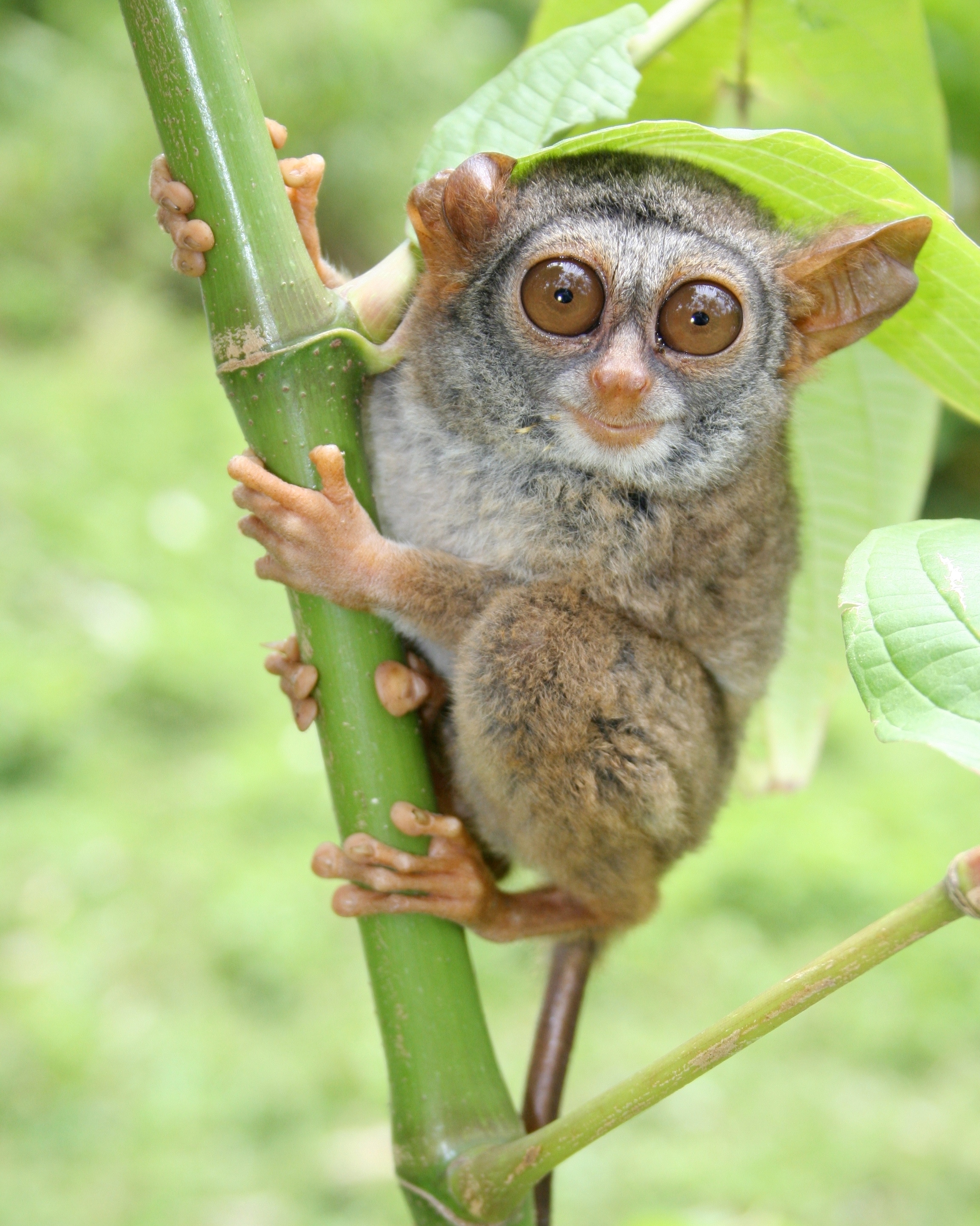A grain of hope in the desert
The regal Arabian Oryx (Oryx leucoryx), which was hunted to near extinction, is now facing a more secure future according to the latest update of the IUCN Red List of Threatened Species™. Its wild population now stands at 1,000 individuals.
“To have brought the Arabian Oryx back from the brink of extinction is a major feat and a true conservation success story, one which we hope will be repeated many times over for other threatened species,” says Ms Razan Khalifa Al Mubarak, Director General of the Environment Agency-Abu Dhabi. “It is a classic example of how data from the IUCN Red List can feed into on-the-ground conservation action to deliver tangible and successful results.”
The Arabian Oryx, a species of antelope found only on the Arabian Peninsula, is locally known as Al Maha. It is believed the last wild individual was shot in 1972. This year, thanks to successful captive breeding and re-introduction efforts, the oryx has finally qualified for a move from the Endangered category to Vulnerable on the IUCN Red List—the first time that a species that was once Extinct in the Wild has improved by three categories.
Although we are achieving successes, there are some alarming new findings. Of the 19 species of amphibian (frogs, toads and salamanders) that have been added to the IUCN Red List this year, eight are listed as Critically Endangered, including Atelopus patazensis, a species of harlequin toad from Peru, and Dendrotriton chujorum, a dwarf species of salamander from Guatemala. Amphibians remain one of the most threatened species groups with an estimated 41% at risk of extinction; the main threats they face include habitat loss, pollution, disease and invasive species.
In the case of New Caledonia’s endemic reptiles, which have been assessed for the first time, two thirds (67%) of species within this group for which we have sufficient data are at risk of extinction. Many of these reptiles are threatened by ongoing habitat loss and fragmentation as New Caledonia’s nickel mining industry continues to expand. This is compounded by the effects of introduced species; for example, deer and pigs damage remaining available habitat, and fire ants, which are invasive alien species, decimate lizard populations, leading to localized extinctions.
“The key to halting the extinction crisis is to target efforts towards eradicating the major threats faced by species and their environment; only then can their future be secured. The IUCN Red List acts as a gateway to such efforts, by providing decision makers with a goldmine of information not only on the current status of the species, but also on existing threats and the conservation actions required,” says Simon Stuart, Chair of IUCN’s Species Survival Commission.
A further new addition to the IUCN Red List is the recently discovered primate Wallace’s Tarsier (Tarsius wallacei). This forest-dwelling species was first described in 2010, and is found in just two small areas of Central Sulawesi, Indonesia. Unlike its cousin the Siau Island Tarsier (Tarsius tumpara), also new on the IUCN Red List this year and classified as Critically Endangered, Wallace’s Tarsier has been listed as Data Deficient. Species are classified as Data Deficient when not enough information is known to assign them to another category.
An assessment of all 248 lobster species has been completed, with 35% being classified as Data Deficient, including the Caribbean Spiny Lobster (Panulirus argus). This species shows decreasing populations as a result of over-exploitation, but unfortunately very little else is known about it. An estimated 1.2 billion people worldwide rely on marine species for food and livelihoods, so obtaining reliable information on catch levels is essential.
“It is extremely important that we keep pushing forward with surveys of little-known species, as without adequate data, we cannot determine their risk of extinction and therefore cannot develop or implement effective conservation actions which could prevent the species from disappearing altogether,” says Jane Smart, Director, IUCN’s Global Species Programme.
Biodiversity loss is one of the world’s most pressing crises, with many species declining to critically low levels. Numerous extinctions are taking place unnoticed, and the number of species classified as Critically Endangered (those at most severe risk of becoming extinct) is increasing. Estimations from the IUCN Red List indicate that extinctions are happening at anywhere from 100 to 1,000 times the ‘background’ or natural rate. The causes are many, including habitat destruction, land conversion for agriculture and development, climate change, pollution, illegal wildlife trade, and the spread of invasive species.
“Conservation does work and species can recover, as shown in the case of the Arabian Oryx. Using data from the IUCN Red List, an opportunity exists for governments and society to guide conservation programmes to put the brakes on species extinctions,” says Julia Marton-Lefèvre, IUCN’s Director General.
Quotes from IUCN Red List partner organizations
“The Red List update tolls a warning that we are still cutting away at our own safety net - the amazing web of life that supports all humankind. But it can also help us start making the repairs that are so urgently needed,” says Dr Leon Bennun, BirdLife's Director of Science, Policy and Information.
“The beautiful South Pacific islands of New Caledonia are home to astonishingly high biodiversity, including a remarkably high number of reptiles found nowhere else on earth. The recent Red List assessments place a spotlight on how many of these unique animals may face extinction, and serves as a call to action. With this new information, governments, NGOs and other stakeholders will be better able to identify priority species and sites for conservation, and more effectively address the threats to these remarkable animals,” says Conservation International’s Naamal De Silva, Senior Advisor for Conservation Priorities in Asia-Pacific, who facilitated the Red List Assessment workshop for reptiles and has been involved with CI’s work in New Caledonia since 2004.
“These new Red List findings highlight the extinction crisis facing Latin American amphibians. Viewed in the context of previous Red List assessments of reptiles elsewhere in the world, this report draws attention to the urgent need to evaluate the megadiverse reptiles of the New World tropics to guide effective conservation action. As an IUCN Red List Partner, the NatureServe network in Latin America and the Caribbean is actively pursuing this important effort,” says Mary Klein, President & CEO, NatureServe.
Dr Tim Entwisle, Director of Conservation, Living Collections and Estates at the Royal Botanic Gardens, Kew, says, “Recent work carried out by Kew, in partnership with IUCN, estimates that one fifth of plants are listed as being threatened with extinction. Habitat loss, climate change, over-harvesting, disease, and the spread of invasive aliens, are all contributing to their demise and scientific evidence is vital if we are to monitor, understand and respond to the challenges facing plants on earth.”
“This health check of the world’s species shows that while some species continue to decline, it’s not a losing battle. We need to continue to learn from the success stories, scaling them up to more species, over greater areas and improve the odds for wildlife still on the brink of extinction,” says Dr Ben Collen from ZSL, the Zoological Society of London.
"While the outlook for many species is still alarming, the improvement in status of some species on the IUCN Red List is real testament to the valuable impact conservation work can have" says Richard Edwards, Chief Executive of Wildscreen, who are working with IUCN to help raise the public profile of the world's threatened species, through the emotive power of wildlife films and photos. "We need to urgently address our disconnection from the natural world, and will only succeed in rescuing species from the brink of extinction, if we successfully communicate their plight, significance, value and importance."
For more information contact:
Borjana Pervan, Media Relations, t +41 229990115, m +41 79 8574072 e borjana.pervan@iucn.org
Lynne Labanne, Species Programme Communications Officer, IUCN, t +41 22 999 0153, m +41 79 527 7221, e lynne.labanne@iucn.org
Kathryn Pintus, Species Programme Communications, IUCN, t +41 22 999 0154, e kathryn.pintus@iucn.org
Notes to editors:
Global figures for 2011.1 IUCN Red List of Threatened Species:
TOTAL SPECIES ASSESSED = 59,508
Extinct = 797
Extinct in the Wild = 64
Critically Endangered = 3,801
Endangered = 5,566
Vulnerable = 9,898
Near Threatened = 4,273
Lower Risk/conservation dependent = 260 (this is an old category that is gradually being phased out of the Red List)
Data Deficient = 8,996
Least Concern = 25,853
The figures presented above are only for those species that have been assessed for the IUCN Red List to date. Although not all of the world’s species have been assessed, the IUCN Red List provides a useful snapshot of what is happening to species today and highlights the urgent need for conservation action.
Relative percentages for threatened species cannot be provided for many taxonomic groups on the IUCN Red List because they have not been comprehensively assessed. For many of these groups, assessment efforts have focused on threatened species; therefore, the percentage of threatened species for these groups would be heavily biased.
For those groups that have been comprehensively assessed, the percentage of threatened species can be calculated, but the actual number of threatened species is often uncertain because it is not known whether Data Deficient (DD) species are actually threatened or not. Therefore, the percentages presented above provide the best estimate of extinction risk for those groups that have been comprehensively assessed (excluding Extinct species), based on the assumption that Data Deficient (DD) species are equally threatened as data sufficient species. In other words, this is a mid-point figure within a range from x% threatened species (if all DD species are not threatened) to y% threatened species (if all DD species are threatened). Available evidence indicates that this is a best estimate.
For example, for amphibians, 41% of species are threatened, although the precise figure is uncertain and could lie between 30% (if all DD species are not threatened) and 56% (if all DD species are threatened).
For New Caledonia endemic reptiles, 67% of species are threatened, although the precise figure is uncertain and could lie between 61% (if all DD species are not threatened) and 70% (if all DD species are threatened).
The IUCN Red List of Threatened Species™
The IUCN Red List of Threatened Species™ (or the IUCN Red List) is the world’s most comprehensive information source on the global conservation status of plant and animal species. It is based on an objective system for assessing the risk of extinction of a species should no conservation action be taken.
Species are assigned to one of eight categories of threat based on whether they meet criteria linked to population trend, population size and structure and geographic range. Species listed as Critically Endangered, Endangered or Vulnerable are collectively described as ‘Threatened’.
The IUCN Red List is not just a register of names and associated threat categories. It is a rich compendium of information on the threats to the species, their ecological requirements, where they live, and information on conservation actions that can be used to reduce or prevent extinctions.
“The IUCN Red List is a joint effort between IUCN and its Species Survival Commission, working with its Red List partners BirdLife International; Botanic Gardens Conservation International; Conservation International; NatureServe; Royal Botanic Gardens, Kew; Sapienza University of Rome; Texas A&M University; Wildscreen; and Zoological Society of London.”
The IUCN Red List threat categories
The IUCN Red List threat categories are as follows, in descending order of threat:
Extinct or Extinct in the Wild;
Critically Endangered, Endangered and Vulnerable: species threatened with global extinction;
Near Threatened: species close to the threatened thresholds or that would be threatened without ongoing specific conservation measures;
Least Concern: species evaluated with a lower risk of extinction;
Data Deficient: no assessment because of insufficient data.
Critically Endangered (Possibly Extinct): this is not a new Red List Category, but is a flag developed to identify those Critically Endangered species that are in all probability already Extinct but for which confirmation is required, for example, through more extensive surveys being carried out and failing to find any individuals.
About IUCN
IUCN, the International Union for Conservation of Nature, helps the world find pragmatic solutions to our most pressing environment and development challenges by supporting scientific research; managing field projects all over the world; and bringing governments, NGOs, the UN, international conventions and companies together to develop policy, laws and best practice.
The world's oldest and largest global environmental network, IUCN is a democratic membership union with more than 1,000 government and NGO member organizations, and almost 11,000 volunteer scientists and experts in some 160 countries. IUCN's work is supported by over 1,000 professional staff in 60 offices and hundreds of partners in public, NGO and private sectors around the world. IUCN's headquarters are located in Gland, near Geneva, in Switzerland.
www.iucn.org IUCN on Facebook IUCN on Twitter
About BirdLife International
BirdLife International is a partnership of 114 national conservation organizations and the world leader in bird conservation. BirdLife's unique local to global approach enables it to deliver high impact and long term conservation for the benefit of nature and people.
www.birdlife.org
About Botanic Gardens Conservation International
BGCI is an international organization that exists to ensure the world-wide conservation of threatened plants, the continued existence of which are intrinsically linked to global issues including poverty, human well-being and climate change. BGCI represents over 700 members - mostly botanic gardens - in 118 countries. We aim to support and empower our members and the wider conservation community so that their knowledge and expertise can be applied to reversing the threat of extinction crisis facing one third of all plants.
http://www.bgci.org
About Conservation International
Building upon a strong foundation of science, partnership and field demonstration, Conservation International empowers societies to responsibly and sustainably care for nature, our global biodiversity, for the long term well-being of people. Founded in 1987, CI has headquarters in the Washington, DC area, and nearly 900 employees working in more than 30 countries on four continents, plus 1,000+ partners around the world. For more information, visit www.conservation.org and follow us on Twitter: @ConservationOrg or Facebook: www.facebook.com/conservation.intl
About NatureServe
NatureServe is a nonprofit conservation organization dedicated to providing the scientific basis for effective conservation action. Through its network of 82 natural heritage programs and conservation data centers in the United States, Canada, and Latin America, NatureServe provides a unique body of detailed scientific information and conservation biodiversity expertise about the plants, animals, and ecosystems of the Americas.
www.natureserve.org
About the Royal Botanic Gardens, Kew
The Royal Botanic Gardens, Kew is a world famous scientific organization, internationally respected for its outstanding living collection of plants and world-class Herbarium as well as its scientific expertise in plant diversity, conservation and sustainable development in the UK and around the world. Kew Gardens is a major international visitor attraction. Its landscaped 132 hectares and Kew's country estate, Wakehurst Place, attract nearly 2 million visitors every year. Kew was made a UNESCO World Heritage Site in July 2003 and celebrated its 250th anniversary in 2009. Wakehurst Place is home to Kew's Millennium Seed Bank, the largest wild plant seed bank in the world. The Royal Botanic Gardens, Kew and its partners have collected and conserved seed from 10% of the world's wild flowering plant species (c.30, 000 species) and aim to conserve 25% by 2020. www.kew.org
About the Species Survival Commission
The Species Survival Commission (SSC) is the largest of IUCN’s six volunteer commissions with a global membership of around 7500 experts. SSC advises IUCN and its members on the wide range of technical and scientific aspects of species conservation, and is dedicated to securing a future for biodiversity. SSC has significant input into the international agreements dealing with biodiversity conservation.
About Texas A&M University
From humble beginnings in 1876 as Texas' first public institution of higher learning, to a bustling 5,200-acre campus with a nationally recognized faculty, Texas A&M University is one of a select few universities with land-grant, sea-grant and space-grant designations. With an enrolment of about half men and half women, 25 percent of the freshman class are the first in their family to attend college. Here, 39,000-plus undergraduates and more than 9,400 graduate students have access to world-class research programs and award-winning faculty. Texas A&M has two branch campuses, one in Galveston, Texas, and one in the Middle Eastern country of Qatar. This research-intensive flagship university with 10 colleges was recently ranked first in the nation by Smart Money magazine for "pay-back ratio" (what graduates earn compared to the cost of their education). The 2011 U.S. News and World Report ranked Texas A&M second nationally in their "Great Schools, Great Prices" category among public universities and 22nd overall. Many degree programs are ranked among the top 10 in the country
www.tamu.edu
About Wildscreen
Wildscreen is an international charity working to promote the public understanding and appreciation of the world's biodiversity and the need for its conservation through the power of wildlife imagery -www.wildscreen.org.uk Founded in 1982, Wildscreen is uniquely positioned at the heart of the global wildlife and environmental media industry, with a long standing international reputation for excellence and credibility in the fields of natural history media, communications and education. Wildscreen’s ARKive project is a unique global initiative, gathering together the very best films and photographs of the world's species into one centralized digital library, to create a stunning audio-visual record of life on Earth. ARKive’s immediate priority is to compile and complete audio-visual profiles for the c. 18,000 animals, plants and fungi featured on the IUCN Red List of Threatened Species.
www.wildscreen.org.uk ; www.arkive.org
About the Zoological Society of London (ZSL)
Founded in 1826, the Zoological Society of London (ZSL) is an international scientific, conservation and educational charity: our key role is the conservation of animals and their habitats. The Society runs ZSL London Zoo and ZSL Whipsnade Zoo, carries out scientific research at the Institute of Zoology and is actively involved in field conservation overseas.
www.zsl.org
About Sapienza University of Rome
With over 700 years of history and 145,000 students, Sapienza is the largest University in Europe, the second in the world after El Cairo: a city within the city. The University includes 11 faculties and 67 departments. In Sapienza there are over 4,500 professors, and 5,000 administrative and technical staff. Sapienza offers a wide choice of courses including 300 degree programs and 200 specialised qualifications. Students coming from other regions are over 30,000 and the foreign students are over 7,000. Sapienza plans and carries out important scientific investigations in almost all disciplines, achieving high-standard results both on a national and on an international level. Professor Luigi Frati has been the Rector of Sapienza University since November 2008.
http://www.uniroma1.it/
